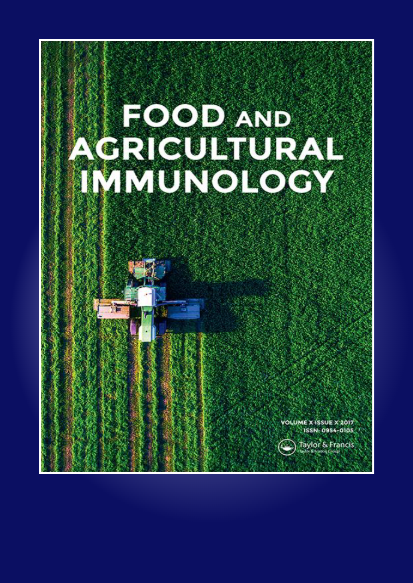Effect of selected bioactive substances and nanoparticles on the immunoreactivity of edible packages containing chitosan, by the ELISA method
IF 2.1
3区 农林科学
Q3 CHEMISTRY, APPLIED
引用次数: 0
Abstract
ABSTRACT The aim of this study was evaluated the effect of selected bioactive substances and nanoparticles on the immunoreactivity of edible packages based on chitosan using the ELISA. The analysed protein was the tropomyosin. The results confirmed the presence of the tropomyosin (3.77 ± 0.79–5.75 ± 0.01 µg/g) in control samples. This study demonstrated that the bioactive substances in the form of grape (0.61 ± 0.34–0.43 ± 0.16 µg/g), blueberry (0.58 ± 0.32–0.39 ± 0.27 µg/g), and parsley extracts (2.09 ± 1.28–0.79 ± 0.40 µg/g) reduces immunoreactivity (p < 0.05) of the tropomyosin. The elder pollen had no significant effect (p > 0.05) on immunoreactivity. ZnO and TiO2 nanoparticles also demonstrated immunoreactivity reduction (p < 0.05). The exception was silver nanoparticles, where the immunoreactivity increased with increasing concentration of grape extract (1.29 ± 0.01–5.47 ± 0.25 µg/g). The results confirmed the inhibitory effect of bioactive substances on the immunoreactivity of the used ELISA and also showed the need to consider immunoreactive substances when interpreting ELISA results.采用酶联免疫吸附试验(ELISA)研究了几种生物活性物质和纳米颗粒对壳聚糖食用包装免疫反应性的影响
本文章由计算机程序翻译,如有差异,请以英文原文为准。
求助全文
约1分钟内获得全文
求助全文
来源期刊

Food and Agricultural Immunology
农林科学-毒理学
CiteScore
5.30
自引率
6.70%
发文量
52
审稿时长
2 months
期刊介绍:
Food and Agricultural Immunology is an international open access journal publishing original immunological research with applications in food, agricultural, environmental and veterinary science. Submissions describing the use of immunological techniques and methods are particularly welcomed.
The journal aims to expand our understanding of the interactions at the interface of food and immune systems including studies on:
-Development of diagnostic systems – all types of ligand-based assays, e.g. antibody, aptamer
-Application of ligand-based assays for the detection or identification of molecules of interest in food science, agricultural research, veterinary investigations and clinical systems relating to food allergy or sensitivity to agricultural chemicals
-Effects of food on the immune system
-Studies on allergy and allergic reactions
-Investigations into food allergies
-Development of allergen-free food systems
-Development of novel assay formats
-Applications of assay systems to the monitoring of food items in relation to safety and labelling
-Food quality issues, e.g. speciation, adulteration and contamination
-Comparisons between different analytical techniques
The journal publishes research and review articles and is essential reading for food scientists, immunologists and all those concerned with the interaction between food and immune systems.
 求助内容:
求助内容: 应助结果提醒方式:
应助结果提醒方式:


